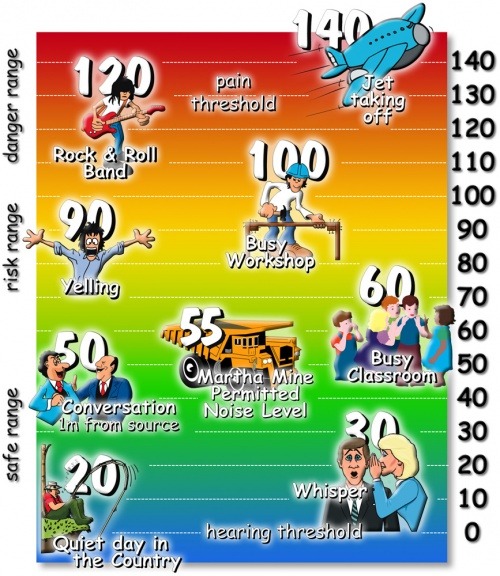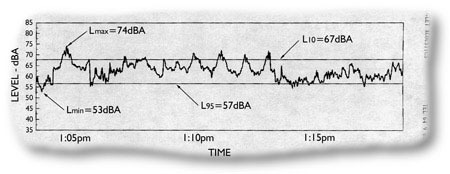Noise
What is noise?
There are four common characteristics of sound, any or all of which determine listener response and the subsequent definition of the sound as ‘noise’. These characteristics are:
- intensity
- loudness
- annoyance
- offensiveness.
The basic unit of sound is the decibel. The A weighted sound level—or dBA—is a good measure of sound detectable by the human ear. A busy office generates a sound level of about 60dBA. An increase of three dBA would be just noticeable, an increase of five dBA would be clearly noticeable and an increase of 10 dBA would appear twice as loud because the decibel scale is logarithmic.
Human response to noise
Response to noise is determined by a variety of factors such as:
- time of day and year
- duration
- purpose
- personal factors.
Research suggests that approximately 10% of people will find any noise not of their own making objectionable. By comparison, approximately 25% of the population have a high tolerance for noise. The aim is to establish appropriate noise levels which are acceptable to the majority of the community.

Noise comparisons - decibel range.
What influences noise levels?
Noise levels are affected by a number of factors:
- steady, light to moderate winds produce higher noise levels downwind and lower noise levels upwind from a given source
- winds of higher velocity increase background noise levels due to turbulence or movement of trees and obscure other noise sources
- temperature inversions, particularly during winter
- low cloud cover is sometimes reported to ‘reflect’ sound waves thereby increasing their intensity on the ground
- background noise from such sources as traffic, cicadas, birds, cattle, flowing water and wind can also have a cumulative effect on noise levels.
Monitoring
In Waihi baseline noise monitoring began prior to the commencement of the mining operation in 1987. A substantial database has been produced and monitoring is on-going. Monitoring sites have varied as mining activities have moved so that the measurement stations fairly represent the most exposed private residences. Monitoring continues throughout mining operations.
A network of monitoring sites established around the operations provides results which are submitted to the Hauraki District Council on a regular basis. Independent monitoring is also carried out by the District Council.
The conditions of consent require that sound monitoring is carried out in accordance with the relevant New Zealand standards for noise, and that representative samples are recorded. Because wind affects noise measurements, the New Zealand standards require that for all outdoor measurements an approved wind shield is used. Similarly the standards acknowledge that representative measurements cannot normally be made if the wind speed exceeds five metres per second.
Operating limits
Conditions relating to hours of work and noise are specified in the Mining Licence and the Hauraki District Council Land Use Consents.
While the conditions vary depending upon what work is being carried out, and the time of day that the activity is taking place, the permitted conditions (abridged) relating to hours of work and noise are:
| Monday – Friday | 0700 – 2100 | 50 dB LAeq |
| Saturday | 0700 – 1200 | 50 dB LAeq |
| All other times | 40 dB LAeq | |
| Monday – Sunday | 2100 – 0700 | 70 dB Laf max |
*For construction activities, of a limited duration, higher noise limits apply (see consent conditions for details).
*Work can only be carried out between 1900 and 2100 hours if it is of an urgent nature and necessary for the effective carrying out of mining operations, and the noise conditions are met.
- L 10 is the noise level which is equalled or exceeded for 10% of the measurement time.
- L 95 is the noise level which is equalled or exceeded 95% of the measurement time.
- L max is the maximum noise level.
- L min is the minimum noise level.

A typical noise monitor printout.
Noise controls
We make every reasonable endeavour to control noise and the effects of noise, employing measures such as:
- equipment selection and maintenance
- construction and planting of noise bunds
- cladding to reduce conveyor noise
- limiting the height of stockpiles
- acoustic cladding around potentially noisy machinery
- closed board fencing
- acoustic noise wall on some sections of perimeter noise bund.